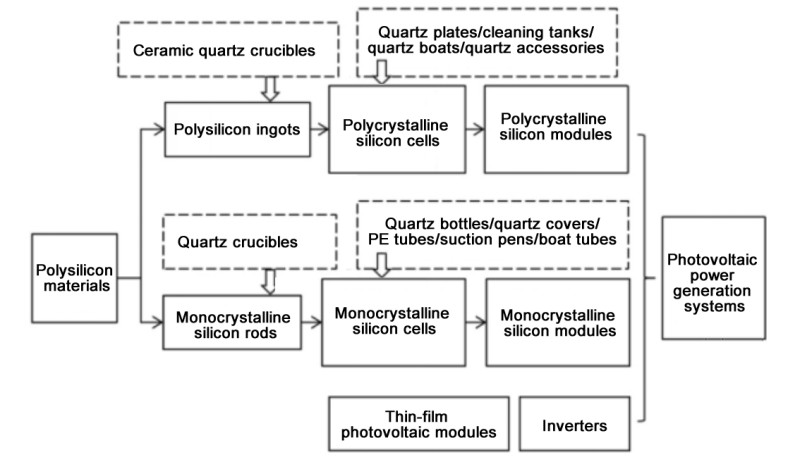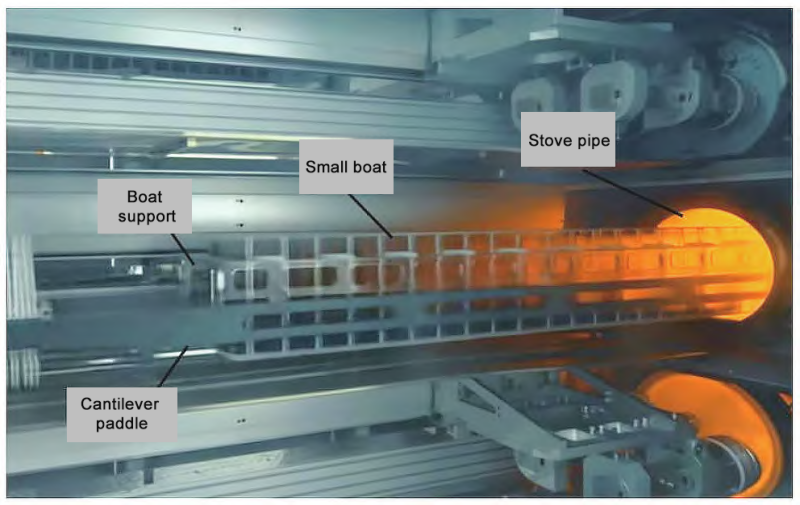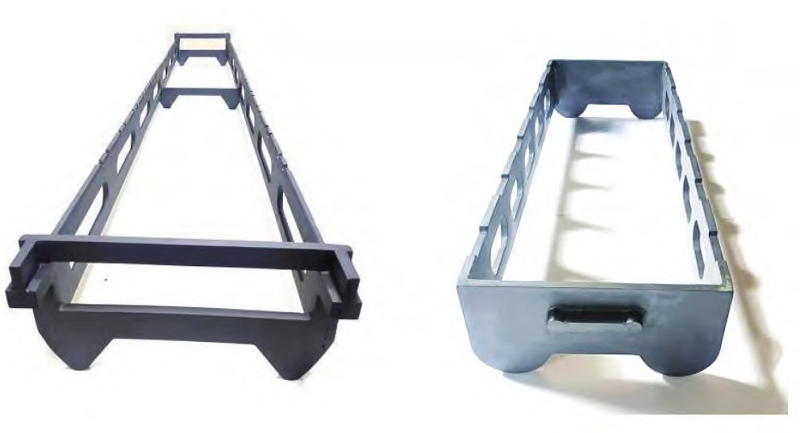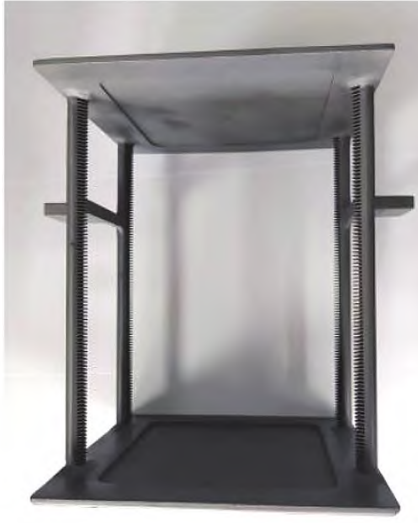With the continuous development of today’s world, non-renewable energy is becoming increasingly exhausted, and human society is increasingly urgent to use renewable energy represented by “wind, light, water and nuclear”. Compared with other renewable energy sources, human beings have the most mature, safe and reliable technology for using solar energy. Among them, the photovoltaic cell industry with high-purity silicon as the substrate has developed extremely rapidly. By the end of 2023, my country’s cumulative solar photovoltaic installed capacity has exceeded 250 gigawatts, and photovoltaic power generation has reached 266.3 billion kWh, an increase of about 30% year-on-year, and the newly added power generation capacity is 78.42 million kilowatts, an increase of 154% year-on-year. As of the end of June, the cumulative installed capacity of photovoltaic power generation was about 470 million kilowatts, which has surpassed hydropower to become the second largest power source in my country.
While the photovoltaic industry is developing rapidly, the new materials industry supporting it is also developing rapidly. Quartz components such as quartz crucibles, quartz boats, and quartz bottles are among them, playing an important role in the photovoltaic manufacturing process. For example, quartz crucibles are used to hold molten silicon in the production of silicon rods and silicon ingots; quartz boats, tubes, bottles, cleaning tanks, etc. play a bearing function in the diffusion, cleaning and other process links in the production of solar cells, etc., ensuring the purity and quality of silicon materials.
Main applications of quartz components for photovoltaic manufacturing
In the manufacturing process of solar photovoltaic cells, silicon wafers are placed on a wafer boat, and the boat is placed on a wafer boat support for diffusion, LPCVD and other thermal processes, while the silicon carbide cantilever paddle is the key loading component for moving the boat support carrying silicon wafers into and out of the heating furnace. As shown in the figure below, the silicon carbide cantilever paddle can ensure the concentricity of the silicon wafer and the furnace tube, thereby making the diffusion and passivation more uniform. At the same time, it is pollution-free and non-deformed at high temperatures, has good thermal shock resistance and large load capacity, and has been widely used in the field of photovoltaic cells.
Schematic diagram of key battery loading components
In the soft landing diffusion process, the traditional quartz boat and wafer boat support need to put the silicon wafer together with the quartz boat support into the quartz tube in the diffusion furnace. In each diffusion process, the quartz boat support filled with silicon wafers is placed on the silicon carbide paddle. After the silicon carbide paddle enters the quartz tube, the paddle automatically sinks to put down the quartz boat support and silicon wafer, and then slowly runs back to the origin. After each process, the quartz boat support needs to be removed from the silicon carbide paddle. Such frequent operation will cause the quartz boat support to wear out over a long period of time. Once the quartz boat support cracks and breaks, the entire quartz boat support will fall off the silicon carbide paddle, and then damage the quartz parts, silicon wafers and silicon carbide paddles below. The silicon carbide paddle is expensive and cannot be repaired. Once an accident occurs, it will cause huge property losses.
In the LPCVD process, not only will the above-mentioned thermal stress problems occur, but since the LPCVD process requires silane gas to pass through the silicon wafer, the long-term process will also form a silicon coating on the wafer boat support and the wafer boat. Due to the inconsistency of the thermal expansion coefficients of the coated silicon and quartz, the boat support and the boat will crack, and the life span will be seriously reduced. The life span of ordinary quartz boats and boat supports in the LPCVD process is usually only 2 to 3 months. Therefore, it is particularly important to improve the boat support material to increase the strength and service life of the boat support to avoid such accidents.
In short, as the process time and number of times increase during the production of solar cells, quartz boats and other components are prone to hidden cracks or even breaks. The life of quartz boats and quartz tubes in the current mainstream production lines in China is about 3-6 months, and they need to be shut down regularly for cleaning, maintenance, and replacement of quartz carriers. Moreover, the high-purity quartz sand used as the raw material for quartz components is currently in a state of tight supply and demand, and the price has been running at a high level for a long time, which is obviously not conducive to improving production efficiency and economic benefits.
Silicon carbide ceramics “show up”
Now, people have come up with a material with better performance to replace some quartz components-silicon carbide ceramics.
Silicon carbide ceramics have good mechanical strength, thermal stability, high temperature resistance, oxidation resistance, thermal shock resistance and chemical corrosion resistance, and are widely used in hot fields such as metallurgy, machinery, new energy, and building materials and chemicals. Its performance is also sufficient for the diffusion of TOPcon cells in photovoltaic manufacturing, LPCVD (low pressure chemical vapor deposition), PECVD (plasma chemical vapor deposition) and other thermal process links.
LPCVD silicon carbide boat support and boron-expanded silicon carbide boat support
Compared with traditional quartz materials, boat supports, boats, and tube products made of silicon carbide ceramic materials have higher strength, better thermal stability, no deformation at high temperatures, and a lifespan of more than 5 times that of quartz materials, which can significantly reduce the cost of use and the loss of energy caused by maintenance and downtime. The cost advantage is obvious, and the source of raw materials is wide.
Among them, reaction sintered silicon carbide (RBSiC) has low sintering temperature, low production cost, high material densification, and almost no volume shrinkage during reaction sintering. It is particularly suitable for the preparation of large-sized and complex-shaped structural parts. Therefore, it is most suitable for the production of large-sized and complex products such as boat supports, boats, cantilever paddles, furnace tubes, etc.
Silicon carbide wafer boats also have great development prospects in the future. Regardless of the LPCVD process or the boron expansion process, the life of the quartz boat is relatively low, and the thermal expansion coefficient of the quartz material is inconsistent with that of the silicon carbide material. Therefore, it is easy to have deviations in the process of matching with the silicon carbide boat holder at high temperature, which leads to the situation of shaking the boat or even breaking the boat. The silicon carbide boat adopts the process route of one-piece molding and overall processing. Its shape and position tolerance requirements are high, and it cooperates better with the silicon carbide boat holder. In addition, silicon carbide has high strength, and the boat is much less likely to break due to human collision than the quartz boat.
The furnace tube is the main heat transfer component of the furnace, which plays a role in sealing and uniform heat transfer. Compared with quartz furnace tubes, silicon carbide furnace tubes have good thermal conductivity, uniform heating, and good thermal stability, and their life is more than 5 times that of quartz tubes.
Summary
In general, whether in terms of product performance or cost of use, silicon carbide ceramic materials have more advantages than quartz materials in certain aspects of the solar cell field. The application of silicon carbide ceramic materials in the photovoltaic industry has greatly helped photovoltaic companies reduce the investment cost of auxiliary materials and improve product quality and competitiveness. In the future, with the large-scale application of large-size silicon carbide furnace tubes, high-purity silicon carbide boats and boat supports and the continuous reduction of costs, the application of silicon carbide ceramic materials in the field of photovoltaic cells will become a key factor in improving the efficiency of light energy conversion and reducing industry costs in the field of photovoltaic power generation, and will have an important impact on the development of photovoltaic new energy.
Post time: Nov-05-2024




